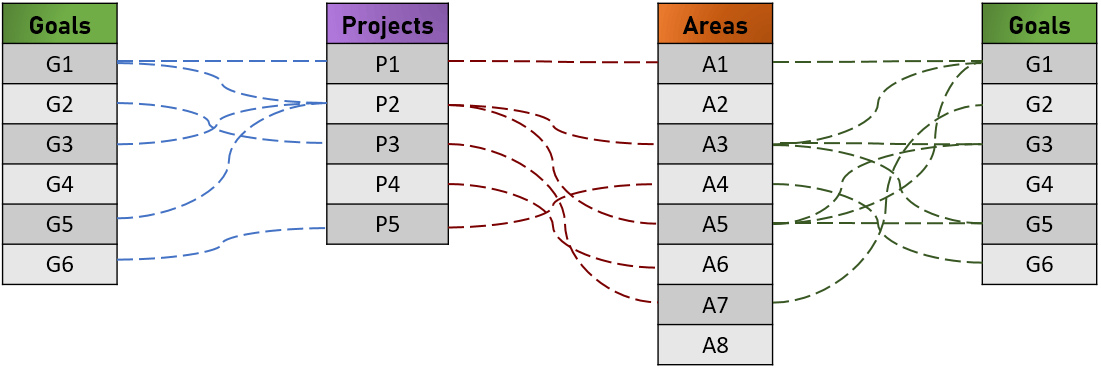Intentional Living
Intentional living is an incredibly gratifying way to go about your day-to-day. It raises both the ceiling and the floor of each day’s potential. Living with intent is all about knowing who you are, what you want, where you want to be, and the why behind it all. Mapping your actions and desires back to an overall plan puts them in context. It makes decision-making easier. It makes going to the gym easier. It makes studying easier. You’re not just “cleaning a toilet”, you’re giving your family a safe and sanitary place to live. You’re not just “mowing a lawn”, you’re contributing to the image of the neighborhood, raising everyone’s property value, and keeping on top of your responsibilities to have a clear head.
Life invariably has its ups and downs. There’s nothing you can do to prevent that; it’s the human condition. Not having a grand, overarching plan isn’t something you notice on good days. “What’s the meaning of it all” doesn’t seem to matter as much when you fall asleep easy, wake up refreshed, feel physically capable, and have the mental acuity of Jason Bourne on 2 liters of Red Bull.
Unfortunately, that’s not everyday. There are days on the other end of the spectrum. Life doesn’t have to suck outright even when sleep isn’t coming, your back hurts, the place is a mess, your car needs work, and you’re feeling generally uninspired. Those days can be made massively more tolerable (or, dare I say, satisfying), if you understand the why behind everything you’re doing. You aren’t sleeping because you stared at a screen until 11pm, because you procrastinated on work that is due, because you weren’t sure how to do it, because you didn’t get clarification when you had the chance, because you were scared asking “what do you mean?” would make you seem slow or unintuitive to your boss, professor, teacher, spouse, friend, or peer. Once you’ve ridden the Why-Chain down enough levels, you will find something inside your circle of influence. Or, if you don’t find root cause about which you can affect some form of change, you might just realize your back hurts because you helped a friend move, because maintaining that kind of friendship is important. Your back pain isn’t pointless suffering.
Over the past ~year or so I’ve been reading a lot of nonfiction books in the realm of business, personal development, and productivity. I’ve been studying computer science. I’ve been learning about and utilizing process modeling techniques and improvement tools. Adding this to three decades of just trying to figure out how things work and how to make them better, and it became clear to me. There’s a common, core set of principles that come up again and again. These few through-lines of organization, achievement, and self-actualization are pervasive. I believe they can be woven together and turned into a simple-yet-extensible system of intentional living. This is a topic I’ve been writing a lot about… just not on here.
Manifest
I’ve been working on one technique to cultivate a more intentional life:
A manifest.
A short list of lists.
A master registry of what’s important to me and how I’m managing it.
I am building a centralized, tool-agnostic manifest. Something to look at when I don’t know what I should be doing with my time, or don’t feel like doing whatever seemingly-arbitrary task is in front of me, a visible artifact against which I could apply the Pareto principle to “get more” out of life, or better-align priorities with their corresponding efforts, a visualization of my personal productivity stack, an enduring technique to ride the ebbs and flows of whatever tools and methods are available. It lives in Notion, but it could just as easily live in Excel, a bookmarks folder, a Google Doc, a notepad plaintext file, or just piece of paper on my desk.
By design the manifest doesn’t have much content. It is a set of links to tools and/or important documents. The locations pointed to are to be updated as life changes, what you use changes, and what is important comes and goes. My manifest is 6 items long.
A Timeline
My system starts with a 5 Year Plan. Like most good project plans, it is broken into various levels of granularity by temporal proximity. In non-thesaurus speak, it’s more specific for the next few months, and increasingly vague as you go into the future.

My timeline is mostly (although not exclusively) my list of goals, plotted on a common axis. It’s housed in Notion.
A Task & Appointments Manager
I’m cheating here by calling this one thing. It is links my logistics management combo of Todoist + Google Calendar.
A Projects List
My list of on-going Projects. Things I’m doing to achieve some sort of end. My Projects List is housed in Notion. Notion is a recurring theme here. Some day I’ll write about Notion again more explicitly. My thoughts have evolved since when I first talked about it on here.
An Areas List
A list of different aspects of my life that I care about. These are the things I’m responsible for maintaining or want to be better at. The purpose of the Areas List is to ensure you’ve got your bases covered, and to ensure the irons you have in the fire actually deserve your time and energy.
I’m a huge fan of maps. I could (and likely will at some point) write all about that.

A goal without an associated Project (like G4 from the graphic above) is a wish. A project without an associated goal (like P4) is something you’re doing just for fun. An area without an associated project or goal is on cruise control. If too many of your goals are associated with any one area, you may reconsider what’s important to you. If one Project supports many goals and/or many areas (P2), it might warrant extra attention and maintenance. Creating a map like this allows you to see and realize what you’re spending your time and energy doing. If you find yourself working tirelessly toward something that you can’t map cleanly back to a given goal or area that you care about… then why are you doing it?
A Personal Logbook
This is a link to my Data Journal and it’s associated data manifest. I assume not everyone would want one of these, but I believe everyone would benefit from such an exercise. It doesn’t need to be a robust quantified self system. It could be as simple as a list of “this is where I put my tax returns” and things such as that. It’s housed in Google Sheets.
A Notetaking System
This is a link to my personal knowledge management solution. Whereas the personal logbook is a list of discrete time-bound facts, the notetaking system comprises of open-ended general knowledge-type information. Again I would like to write more about this topic, but I’ve already written too much. In short, Gillespedia is likely going to be moved into this blog as I set up my Zettelkasten. This is housed in Notion… although I might switch to Roam Research (or not).
Conclusion
Can you say what’s important to you? Do you know how you’re managing it?
Happy pi day, by the way.
Top 5: Sources of Inspiration for My Manifest
- Getting Things Done, the book by David Allen
- The surprisingly great blog written by task management app of choice “Todoist”. Reach this one article, for example.
- Tiago Forte’s PARA Method
- A few different posts on Mark Koester’s Blog
- Digital Minimalism and Deep Work, the books by Cal Newport
Quotes
“define your projects, or they will define you”
- Tiago Forte
